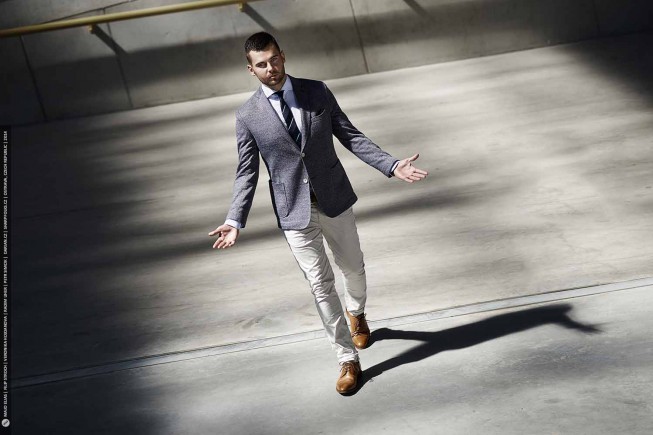Why Shoot to RAW?

If photography is more for you than just a way to document celebrations, relatives, and vacations, read on. In short if photography is what you live for and you want to present the best, then this text is definitely for you. Take these words to heart, and you’ll never be stuck with a “great… but unusable” picture again.
So—why should you photograph exclusively to RAW? In short, it’s because you never know when you might take an exceptional photograph. And if that photograph is in JPG format, or worse yet in a low-resolution JPG, what then? We’ll first back up for a wide view, and then look at the matter in detail.
What’s So Special About RAW Anyway?
Looking at RAW from the perspective of the age of film photography, it can best be compared to negatives. JPGs, meanwhile, are most comparable to Polaroid pictures. When working from RAW, just like when working from a negative, there are many ways you can process your photograph. In the old days you could use a negative to produce photos at practically any size you needed, with your choice of brightness or contrast, while there wasn’t much you could do with an already-developed photo. The same is true now of RAW vs. JPG. Although JPGs can be edited, you have to keep in mind that every edit to a JPG causes at least some loss of quality.
JPG Is Lossy
JPG images lose at least a little quality every time they are opened and saved. You might not notice it after the first round of edits, but over time you can have a situation where your picture will have for example seen its eye-pleasing color gradients replaced with color artifacts—with distortion. Meanwhile with a RAW original, you’re free to export a lossless, 16-bit TIF file and edit it freely in multiple sessions before finally saving it to a JPG that you don’t intend to process further. You can erase the TIF after that, and you’ll want to as well, since TIFs are large. But keep your “negative”—your RAW photograph.

Space Problems
It’s true that RAW files are significantly larger than JPG files. But by carefully sorting and selecting your shots in-camera, you can delay space crises significantly. You yourself know best how you take pictures and how large a card you need. Note that ultimately, you will also want backup memory cards.
Send Me All the Photos
You surely know the terrible sentence above. You’re photographing a party, celebration, concert, or vacation. Your non-photographer friend asks you to send all the photos from the shoot. Handing over every photo is, to put it kindly, of debatable value, since even a professional will have a number of bad shots in every shoot. Blurry shots. Unfocused shots. Miscomposed shots. Blurry shots. Unfocused shots. Miscomposed shots. Shots that belong in one place only: your computer’s Recycle Bin… and definitely not on the disk of your friend, who will inevitably pass them on to other people. So it’s quite a convenient (and fitting) excuse when your camera shoots to an atypical format that your friend’s browser may not support, and thus you can’t just send an unprocessed shoot.
So Then…
Imagine that you’ve just finished a shoot where you produced an exceptional photograph. If you don’t have that photo in RAW format, your possibilities for working with it are limited, and you’ll truly regret the situation. Don’t let that happen—shoot exclusively to RAW!

zkraus
“””But by carefully sorting and selecting your shots in-camera, you can delay space crises significantly.”””
Be very careful with this, try not to delete any photo in-camera, because on the small screen you can overlook so many details, also the photo is scaled down. You might observing the camera screen in sunlight, this is significantly influencing the feel of over/under exposure.
On the other hand slightly misfocused shots looks very sharp when scaled down, so you probably wouldn’t delete it either on small screen.
Ultimately, it’s up to you, but I usualy don’t delete any photos, even the bad ones, you might get into experimenting mood and you never know what you can gain from blurry photos :) also it is a good practice to try to get the best from the worst.
Andre
I completely share your comment. But it’s more about space issues coming with RAW files than the RAW format itself …
Andre
I am in digital photography for ten years now, beginning with a Nikon Coolpix. For years I didn’t bother about the RAW format. “That’s for others, pros and so on”. Then a read something like “RAW format is the negative in digital photography”.
I am quite convinced of the advantages of the RAW format. But when developing a ‘normal’ photo from RAW to Jpeg, I must say that there is nearly no difference with the Jpeg photo that was done by the processor of the camera. Only for photos that seem more ‘extreme’ (missed exposure, bad white balance, etc), I get a better result than the camera.
Nevertheless I’ll continue to go on with RAW. I don’t have (at least for the time being) a problem of space. And there are other possibilities (like HDR).
TerryB
A RAW file is the photographer’s safety net in that it can often enable a decent image to be pulled from one that is deficient, technically, in a number of areas that Andre points out. It also allows for a good image to be manipulated to the photographer’s personal wish in a manner simply not possible with a jpeg or TIFF, and it is this ability for a RAW image to be pulled around wherein lies its advantages. And, of course, as the changes to a RAW file are never embedded in it, it can used over and over again to achieve slightly different results.
It doesn’t automatically mean that a jpeg converted from a RAW file, or TIFF, will be better overall than the in-camera jpeg. This is especially so with cameras that have excellent jpeg engines. The RAW file does score where the in-camera jpegs are lacking. But this is a deficiency of the camera, not necessarily because RAW is better.
This article ends with the advice to shoot only RAW. I’d say shoot RAW+jpeg where this facility is available. Not all jpeg images need to be further processed so having both options saves, or can save, a lot of time in post-processing.
A huge advantage with Zoner is the ability to set the compression ratio for saving jpegs and setting this to 100 I’ve yet to see any loss in quality, although the jpeg file size does increase.